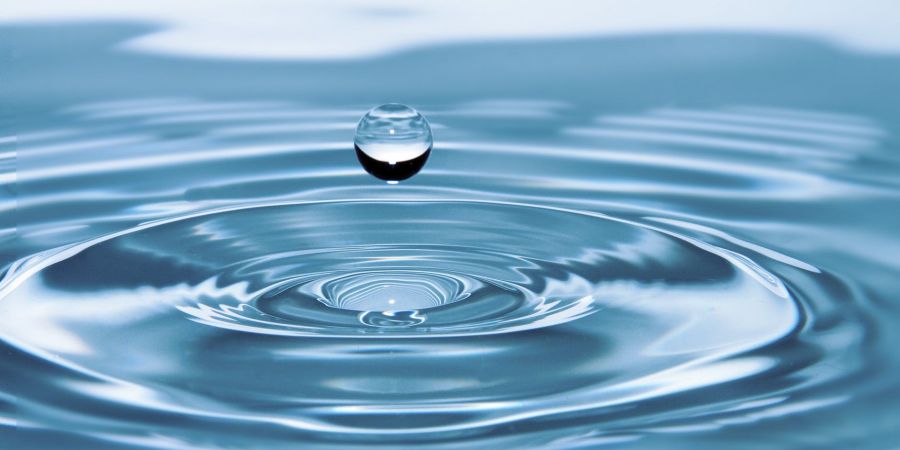

Water (chemical formula H2O) is an inorganic, transparent, tasteless, odorless and almost colorless chemical substance that is the main component of the earth's hydrosphere and the liquid of all living organisms. know (where it acts as a solvent [1]). It is vital to all known life forms, although it does not provide food, energy, or organic micronutrients. Its chemical formula, H2O, indicates that each of its molecules contains one oxygen atom and two hydrogen atoms, joined by covalent bonds. The hydrogen atom is bonded to the oxygen atom at an angle of 104.45°. [2] "Water" is also the name for the liquid state of H2O at standard temperature and pressure.
A sphere of liquid water, concave and bouncing in water caused by something falling through the water surface
A solid body of water (ice)
Earth's atmospheric clouds condense in the form of a solid body of water (ice)
steam gas.
There are several natural states of water. It forms rain as rain and aerosols as fog. Clouds are made up of suspended water droplets and ice, its solid state. When finely divided, crystallized ice can precipitate like snow. The gaseous state of water is water vapor or steam.
Water covers about 71% of the Earth's surface, with seas and oceans making up the majority of the water on earth (about 96.5%). [3] A small fraction of the water occurs as groundwater (1.7%), in glaciers and ice caps in Antarctica and Greenland (1.7%), and in the air as vapors and clouds (including clouds). including ice and liquid water suspended in the air) and precipitation. (0.001%) [4] [5] Water moves continuously through the cycles of evaporation, transpiration (transpiration), condensation, precipitation and overflow, often into the sea
Water plays an important role in global economy. About 70% of fresh water used by humans is for agriculture. [6] Fishing in both saltwater and freshwater has been and continues to be a major source of food for many parts of the world, providing 6.5% of global protein. [7] Much of the long-distance trade in goods (such as oil, natural gas, and manufactured goods) is carried by ships across seas, rivers, lakes, and canals. Large amounts of water, ice and steam are used for cooling and heating, in industry and in homes. Water is an excellent solvent for a wide variety of substances, both mineral and organic; so it is widely used in industrial processes, as well as in cooking and washing. Water, ice and snow are also at the heart of many sports and other forms of recreation, such as swimming, sailing, sailing, surfing, sport fishing, diving, ice skating and skiing.
Etymology
History
Properties
Main article:
Properties of water
A water molecule consists of two hydrogen atoms and one oxygen atom
See also:
Water (data page) and
Water Model Water (H2O) is an inorganic compound. At room temperature, it is a tasteless and odorless, almost colorless liquid with a slight blue tint. This simplest hydrogen chalcogenide is by far the most studied chemical compound and has been described as a "universal solvent" due to its ability to dissolve many substances. [9] [10] This allows it to be the "solvent of life":
[11] indeed, water found in nature is almost always composed of various solutes, and the steps specifically required to obtain chemically pure water. Water is the only common substance that exists in solid, liquid and gaseous forms under normal earth conditions. [12]
State
Three common states of matter
Along with oxidan, water is one of the two official names of the chemical compound H
2O; [13] it is also the liquid phase of H
2O. [14] Two other common states of water matter are the solid phase, ice, and the gaseous, water vapor or vapor phase. Add or remove heat






